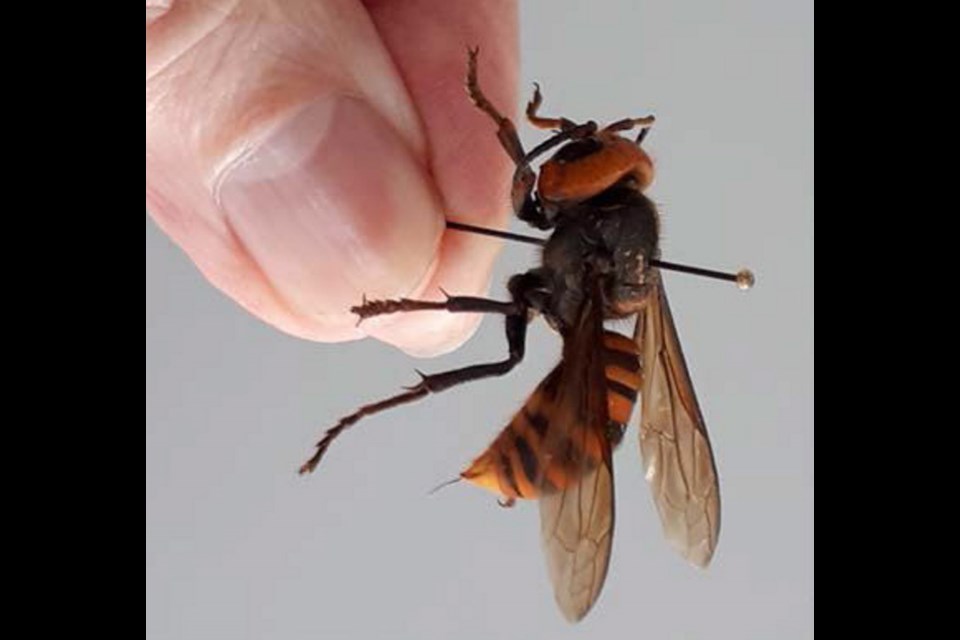Asian giant hornets, which feed on honeybees and can wipe out entire hives, have been found in the Nanaimo area, the first time the invasive species has been spotted on Vancouver Island.
B.C.’s Ministry of Agriculture said in an information bulletin Wednesday that Canadian and international experts have positively identified three giant hornets discovered in August.
Ministry of Agriculture entomologist Tracy Hueppelsheuser said two of the hornets were found by a beekeeper around his hives, while a third was located in someone’s backyard.
“Those are all we have right now,” she said. “So we’re hoping to let the public know and if anybody sees any more, we’d sure like to hear about it.”
The hornets, which are commonly found in China, Japan and the Korean Peninsula, can reach up to five centimetres in length with a wingspan up to seven centimetres.
“They have this big head with black eyes and then orange and black stripes on the abdomen, so it’s a pretty distinctive insect,” Hueppelsheuser said.
Although they pose a risk to honeybees and other insects, Asian giant hornets aren’t particularly interested in humans or pets, health officials say.
“Even in eastern Asia, where they normally reside, interactions between this particular insect and humans are not common,” said Dr. Paul Hasselback, a medical health officer in Nanaimo.
“They aren’t types of hornets that are coming after humans or human food.”
They do nest on the ground, however, and will sting if disturbed. Given the hornets’ size, a single sting can be painful and cause swelling, redness and itching that can be treated with ice or a cold compress.
Of more concern is the prospect of multiple stings due the toxins that are released by giant hornets, Hasselback said.
People who suffer 10 or more stings might be at increased risk of developing an allergic reaction and should seek medical attention immediately, officials say.
“If there are multiple stings in particular, that can be enough of a dose of a venom to actually lead to other medical complications,” Hasselback said.
“So being aware of what those potential complications are to the toxin is something that we’ve tried to ensure that local practitioners are aware of.”
As for the risk to honeybees, government officials are investigating how to help beekeepers install surveillance equipment and traps in the spring if more giant hornets emerge following a period of dormancy in the fall and winter.
Gail Wallin, executive director of the Invasive Species Council of B.C., said it’s unclear how the hornets got here in the first place, though she noted that foreign insects generally arrive as a result of trade or travel.
She said any invasive species can upset the balance of a local ecosystem and displace other species.
“In this case, it’s actually going to feed on honeybees, which are important pollinators for us, but they’re also an important industry.”
Wallin said it’s crucial therefore that people remain vigilant and report anything that looks out of place, so that officials can take steps to deal with the intruders.
Anyone spotting Asian giant hornets or other invasive species can notify the council by telephone at 1-888-933-3722 or through its Report Invasives BC app for mobile phones.



